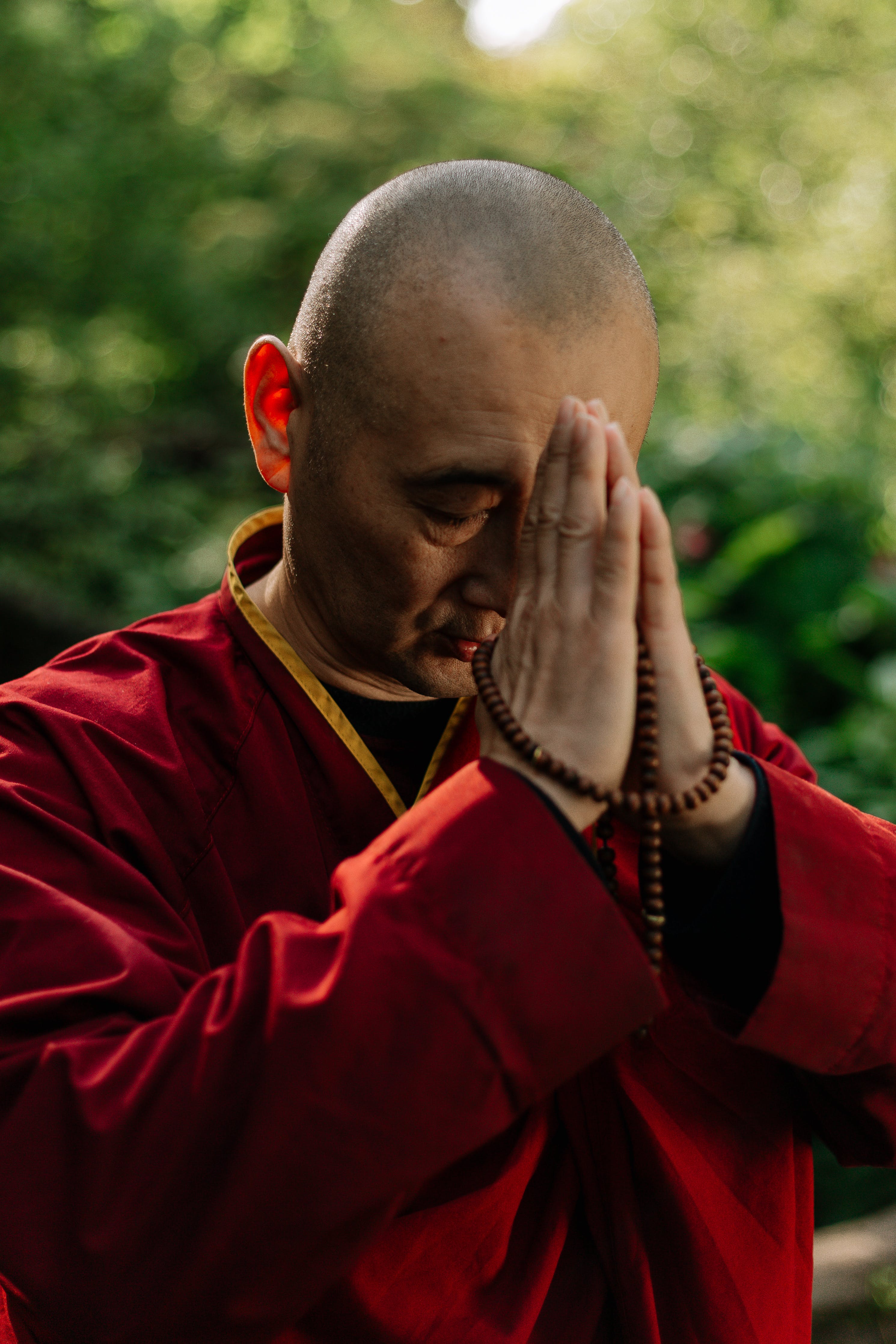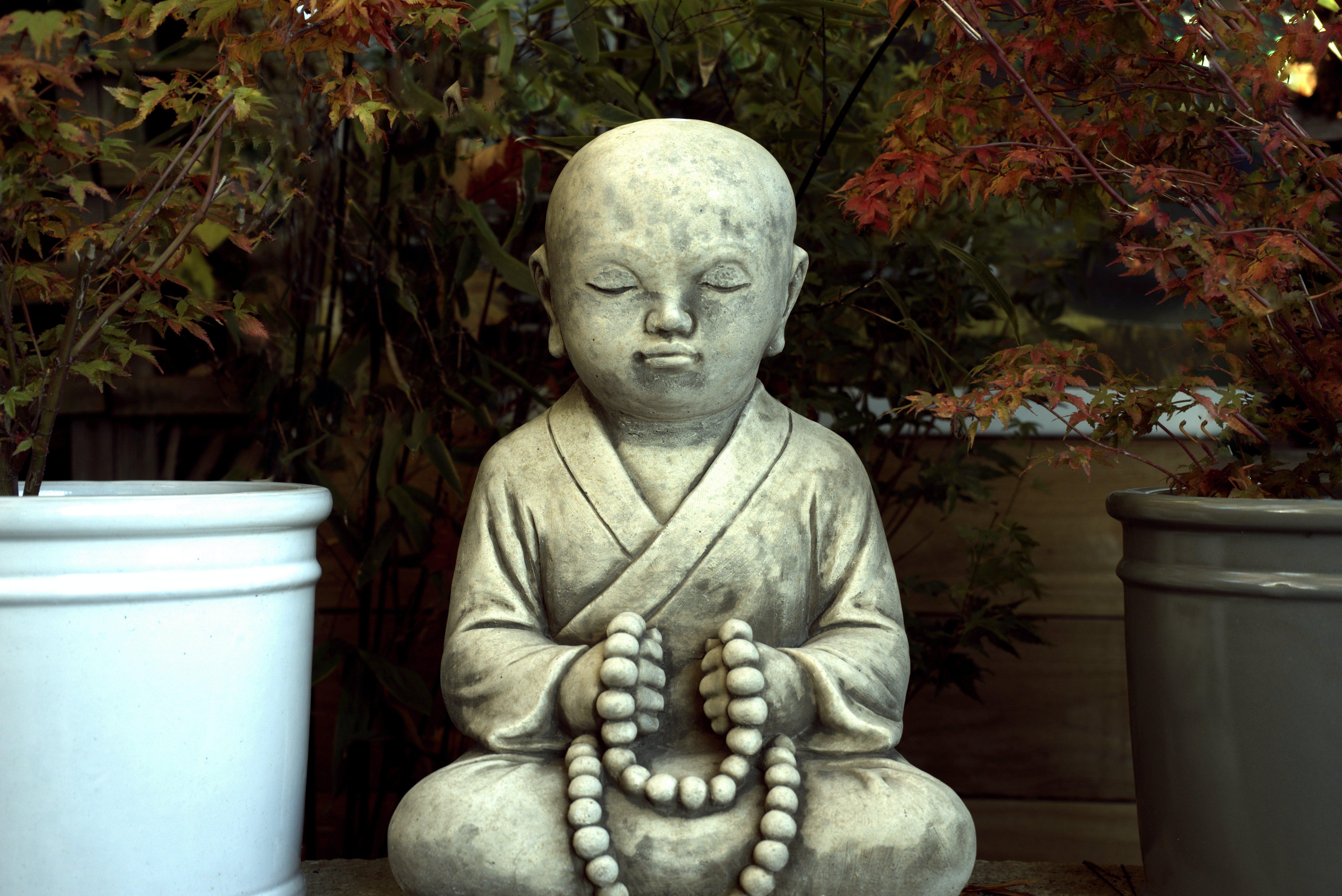
Yoga: Tradition, Origin and History
Workout, path to spirituality or a way to stay healthy - yoga has many, very different facets. But where did yoga originate, how did it develop over time and what status does yoga have in today's society?
The origin of yoga - back to the roots
Yoga as we know it today has a history that goes back thousands of years. The roots of yoga lie in the Indian tradition around 5,000 years ago. This means that there are several thousand years of development and change between the original yoga teachings and today's practice. The Vedas , India's oldest writings, speak of holy men who meditate and do breathing exercises. Yoga practice initially focused primarily on the mind, which was supposed to find peace through meditation . The so-called asanas as strengthening physical exercises were initially not part of yoga practice.
Yoga is that inner state in which mental and spiritual processes come to rest.
However, this does not mean that our current basic understanding of yoga, a unity of body and mind , was not already known at that time. The writings of the Indus Culture also contained mentions and illustrations of physical yoga positions that are still used in yoga today. However, these were not an explicit part of the teaching. Instead, they were intended to make the body fit so that the mind could concentrate fully on the long meditative exercises.
So we can conclude that people long ago had the need for a clear mind and inner peace. Yoga is defined in the second verse of the Indian text Yoga Sutra as follows: “Yoga is that inner state in which the mental and spiritual processes come to rest.”
The term yoga itself comes from Sanskrit , the sacred language of India, where it is referred to as “union” or “connection” and also refers to the connection of body, mind and soul.
Formative writings for the development of yoga
In the form we know it today, yoga was shaped by several influences that shaped it from the purely meditative mental discipline to the body work we know today. As already mentioned, it all started with the Vedas, India's oldest scriptures , as well as their treatises, the Upanishads.
These focused on the basic concepts of yoga and Ayurveda and primarily contain sacrificial rituals, mantras and hymns. The Upanishads eventually developed from the Vedas and contain around 200 short philosophical texts. The Upanishads, part of the Veda, ultimately served as a collection of philosophical Hindu writings.
The following works were also influential in the further development of yoga.
Patanjali's Yoga Sutra
In the writings of the scholar Patanjali, the eight limbs of yoga were described, which show the path to spiritual enlightenment. The collection consists of 196 aphorisms (short verses/sutras) written around 400 BC. have arisen and focus on the state of spiritual liberation. The eight limbs of yoga include:
- Yamas - Moral treatment of the environment
- Niyama - dealing with yourself
- Asana - dealing with the body
- Pranayama - dealing with the breath
- Pratyahara – control of the senses
- Dharana – concentration
- Dhyana – meditation
- Samadhi – Inner Freedom: Fulfillment, Knowledge, Unity
To a certain extent, this text serves as a classic guide to yoga up to the present day. The Yoga Sutra is the basis of the modern interpretation of yoga practice and is also an integral part of yoga teacher training.
Hatha Yoga Pradipika
The Hatha Yoga Pradipika ultimately comes closest to today's understanding of yoga practice and already includes some exercises that are also used in today's yoga. Written in the 15th century by Rishi Swatmarama, the scripture combines the spiritual and physical aspects of yoga and sees the purification of the body as an essential aspect of enabling the free flow of energy. In addition, different breathing exercises can already be found that have parallels to the pranayama practiced today, the breathing technique essential for yoga.
In addition to the Vedas , the Yoga Sutra and Hatha Yoga Pradipika as the three major works in the history of yoga, there are several other writings that had an influence on the path of yoga to the form we know it today. Some are mentioned below.
- Smritis : Sacred Texts in India. They were written based on human memories and convey rules of behavior and legal texts.
- Puranas : These were written to make the religion of the Vedas accessible to people. They provide descriptions of ceremonies and festivals in honor of the main deities (Brahma, Shiva, Vishnu) with great importance for Indian philosophy. They also contain rules and obligations for religious and social life, which have their origins in Hindu teachings.
- Itihasas : Epics in the form of heroic stories in order to make them accessible to the general public through simpler narratives.
- Bhagavad Gita : One of the central scriptures of Hinduism. It is the most famous philosophical part of the Mahabharata, India's most famous heroic epic. Central to this are Sri Krishna as a divine figure and the path to the highest reality through selfless action, from which the teachings for good living and acting are derived.

Yoga, philosophy and religion
Even though its roots lie in Hinduism and Buddhism, yoga was and is practiced by people of very different religions. A connection between yoga, religion and philosophy can definitely be seen. For thousands of years, strictly celibate people, known as ascetics, have tried in various ways to achieve higher knowledge through instinct control and self-knowledge. Asceticism and yoga were considered promising methods of getting a little closer to achieving this goal. People hoped for salvation in this world, which justified the sometimes torturous deprivations of the body or made them bearable. The body was therefore only an instrument on the path to enlightenment.
While such yoga practices embedded in religious rituals have lost their meaning today, the “devotion to God” required in the Bhagavad Gita has survived in the present. Albeit in a secularized form rather than “devotion to a higher power”: one speaks of spiritualism instead of religion.
How did yoga come to the West?
Yoga has been passed down from teacher to student for thousands of years. There were numerous well-known yoga masters, including Swami Vivekananda, Paramahansa Yogananda, Swami Sivananda and BKS Iyengar , who popularized the practice of yoga and developed their own unique teachings and styles .

Yoga's influence in the West began to spread in the late 19th and early 20th centuries when Indian teachers began traveling to Western countries and sharing their wisdom. Swami Vivekananda was one of the pioneers who introduced yoga at the world's premier interfaith meeting, the Parliament of the World's Religions in Chicago in 1893 . Later, other teachers such as Paramahansa Yogananda , who gained great attention with his book "Autobiography of a Yogi" in 1946, also established themselves.
However, it was not until the 1960s and 1970s that yoga began to gain popularity in Western countries, particularly the United States. This was a time of growing interest in spirituality, self-discovery and alternative lifestyles . Yoga masters such as BKS Iyengar , Pattabhi Jois and others contributed to the spread of various styles of yoga through their travels and teachings, including Hatha yoga, Ashtanga yoga, Kundalini yoga and many others.
Yoga in Germany
A significant influence on the spread of yoga in Germany was the aforementioned visit of the Indian Swami Vivekananda to the World Parliament of Religions in Chicago in 1893 . His presentation of yoga attracted attention and sparked interest in Indian spirituality and philosophy in Germany as well.
In the 1920s and 1930s, other Indian teachers and gurus finally traveled to Germany to spread their teachings. Swami Sivananda , an important yoga master, had followers in various parts of Europe who spread his ideas and practices. The first yoga school was founded in Berlin in 1921 .
After the Second World War and especially in the 1960s and 1970s , during the period of growing interest in Eastern spirituality and alternative lifestyles, yoga also became increasingly popular in Germany. This was reinforced by the travels of the Indian teachers already mentioned. ZDF also broadcast a Hatha Yoga series in 1973 , which significantly increased the popularity of yoga in Germany. The fact that the hippie community was also moving through the country at this time also helped yoga become more popular in society.
What significance does yoga have in our society today?
Today yoga has definitely become a trend. It's a great way to harmonize your body and mind through physical exercises and meditation and to live in the here and now. Because in our hectic everyday lives we quickly lose touch with ourselves.
It's not just in Germany that the number of yogis and yoginis who regularly train their bodies and minds is constantly increasing. Yoga is practiced today in a variety of forms, be it for physical fitness, spiritual growth, stress management or general well-being . Yoga studios and classes are common in many countries, and the diversity of yoga styles and practices reflects the adaptation and evolution of this ancient tradition in the modern world.
Current figures also show that yoga is also very popular in Germany: in a Statista study in 2023, around 3.26 million people said they regularly did yoga in their free time. And the trends are increasing.

Are you also looking for your individual yoga experience ? Welcome to findedeinyoga.org. Here you will find everything about yoga, the different yoga styles and a large selection of various yoga offers .




.png)